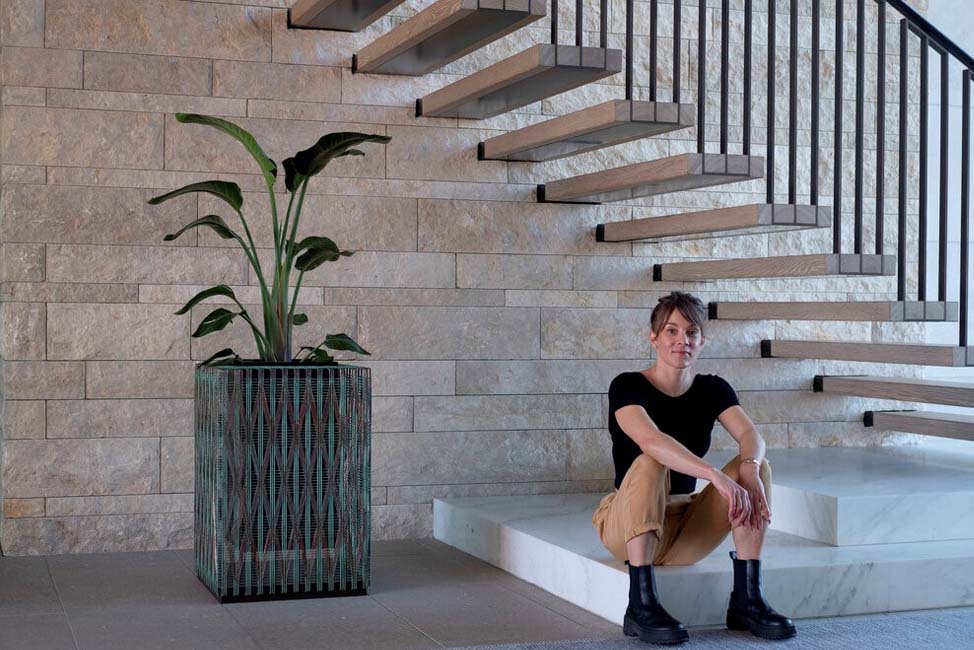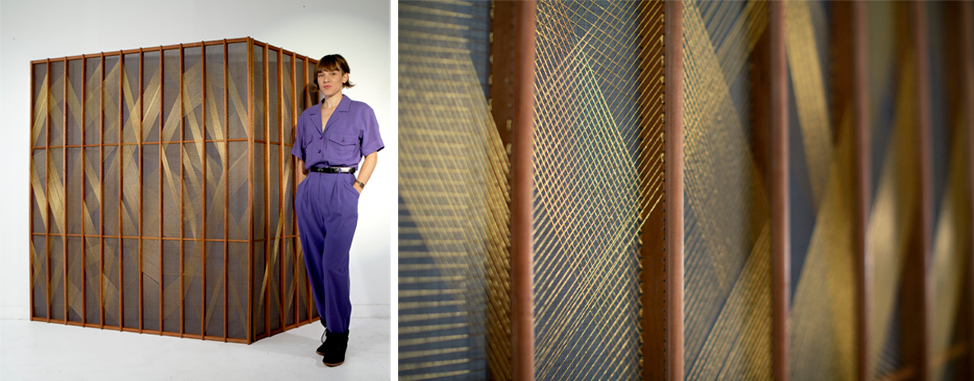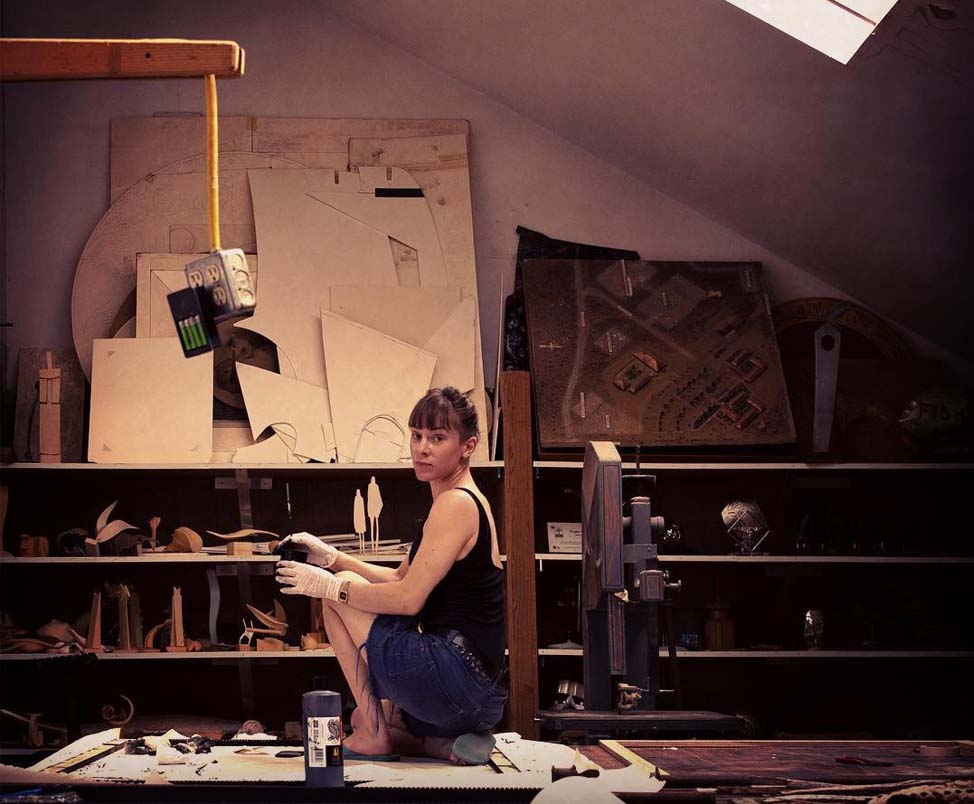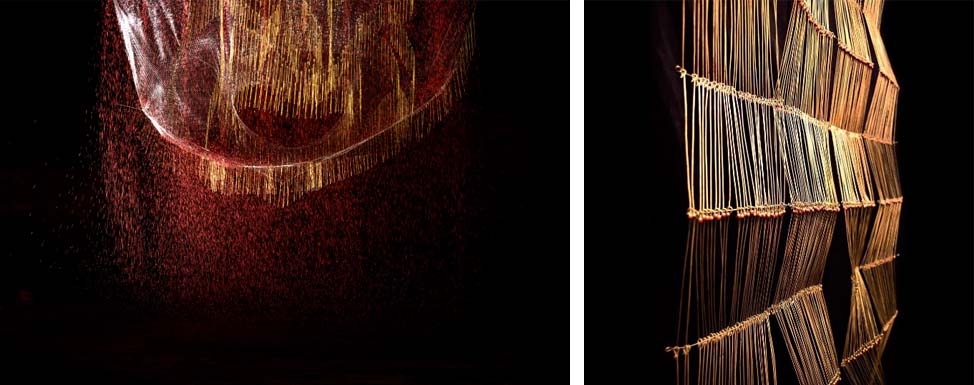30 September 2021

Annika Bowker
Architectural/Interior Designer and Artist
Bachelor of Architecture (Honours)
When Annika Bowker first arrived in New York City, she was completely enamoured by the work she experienced, taking many field trips to see buildings and art she had long admired. Immersed in this energy and feeding off of the similar creatives who came to the capital for the endless opportunities, it indelibly infused her work as an artist and architectural and interior designer.
Surrounded by the hordes of people in NYC with grit and determination – and the strong sense of camaraderie in that – Annika works from a workshop and studio in Red Hook, Brooklyn which she shares with other emerging young design and art businesses. Over almost a decade in the city, she’s now creating her own stunning works of art through mediums of plants, textiles, wood and metal.
Annika worked in Adelaide for three years after graduating from her Bachelor of Architecture with First Class Honours and then made her way to the US to work for award-winning architecture firm, Tod Williams Billie Tsien Architects. The next couple years in the city, Annika went into museum and exhibition design with Studio Joseph working on a renovation of the Yale Natural History Museum and other NY art and history shows.
She then tried her hand in high end residential and community engaged projects with another award-winning architecture practice, Leroy Street Studio, to learn about materials, how to detail and build, working on a house for four years from start to finish.

For as long as she could remember, Annika had always had a strong desire to make things and be an artist, and during the making of the house, she started practicing art and weaving.
Supported by Leroy Street Studio, she eventually made a conscious decision to act on this desire to make art, maintaining a strong relationship with the practice who now hire her for commissions for their clients, which she says has been a rewarding transition and amazing professional relationship.
“The transition feels natural because I’ve been following what I’m excited about, however that doesn’t often feel comfortable. Every piece I make has a steep learning curve and is full of challenges,” Annika says.
“Most importantly, it wouldn’t have been possible without the architecture community supporting my desire to be an artist. My first few commissions have all been from architects or people in the industry.”
Making her name as a bona fide artist in 2019 she completed a celebrated art residency in Joshua Tree making two linen weaves holding desert plants moving north due to climate change – one of which is being shown this year at the San Bernardino Museum.
She’s also currently making a large woven metal seat back for a built-in sofa in a townhouse and is working on a residential project in Jamaica for a NYC client. All while immersed in video production for her museum show and assisting in construction administration for Leroy Street Studio.

Being involved with amazing studios and firms in her first years in NYC, the intensity and creativity of the city had a heavy influence on Annika at first. However, she found the constant energy could be exhausting if you didn’t know when to dip out of it all – a skill took quite a few years to cultivate – and she realised that a lot of her Australian identity wanted to filter back into her life and work. Her focus shifted to who she was at her core.
Raised in semi-rural Australia by parents always tending to animals and the land, she forged a strong relationship to the natural world. Her father was a design technology teacher, but at home he would work on cars and train horses and her mother would work in the garden – these simple domestic acts are creative says Annika – and is grateful to have grown up on a property where she and her sister were left to their own devices to make fun.
Similarly, spending a lot of time with her grandparents and their innate taste and work ethic – her Nanna made clothes, tapestries and upholstery and Grandfather built their house and was always tinkering – further encouraged her curiosity and imagination.
“Being surrounded by all these influences gave me an appreciation for aesthetics, how things were made, and the lifetime of domestic objects: where and how they wear, how they smell, what genre of design they speak to, and how they have been modified and repaired since,” Annika says.
“I think that because neither my parents or grandparents were professionals in these roles I witnessed at home, there was a creative freedom and relaxed pursuit toward it all. I certainly developed the inclination to learn through doing and using my hands to inform my mind.”

This is reflected in her work now as well. While learning how to balance more measured approaches and phases in architecture which are incredibly meticulous requiring intense focus, accuracy and repetition, Annika has always enjoyed a looseness that feels naive and relies on the subconscious, or intuition, when it comes to art.
Though it’s also been her perseverance to keep making art and bravery in venturing into unknown territory –moving countries, changing disciplines, or trying a new material – that has led to the recognition and success she is now enjoying.
The natural anxiety most people have around making things, and the fear of it not being ‘good’, still does plague her, but she stresses how it’s important to just enjoy the process and be playful and exploratory. It’s been a lesson in letting go of a preconceived design allows for the unknown, and the value in summoning that.
“It will be bad and messy, but hopefully someday, or sometimes, you get to the good stuff. Often people want to find the meaning in what they are doing before doing it – when really the act of doing will show you the way.”
“Don't be afraid to fail again and again and again. It's a vulnerable place to exist but necessary for growth. Keep learning once you leave school. Learn to work in a team and build community, this is not a solo sport.”
“Follow hunches, get weird, get messy, find the joy in it all, love the craft.”
Find more of Annika’s work and projects via her Instagram here. Visit her website here.



